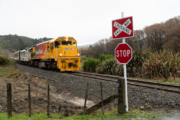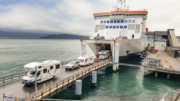Tracking the nation’s networks with new Transport report
The Ministry of Transport has launched a new report, the Transport Network Performance Report, providing a comprehensive picture of how Aotearoa New Zealand’s air, road, rail, port and public transport networks are performing at a national level.
Continue reading












